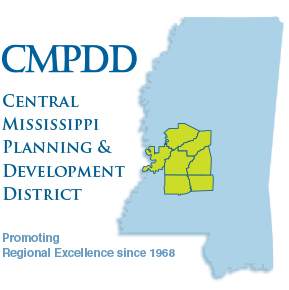The Federal Transit Administration (FTA) defines Transit Asset Management (TAM) as a business model that uses the condition of assets to guide the optimal prioritization of funding of transit priorities in order to keep the transit network in a State of Good Repair. The purpose of TAM is to help achieve and maintain a State of Good Repair for the nation’s public transportation assets. TAM regulations apply to all transit providers that are recipients or sub-recipients of federal assistance under 49 U.S.C. Chapter 53 that own, operate or manage transit capital assets used in the provision of public transportation.
The City of Jackson, which operates JTRAN, is responsible for developing a TAM Plan and establishing TAM targets as the designated public transit provider in the Jackson MPO planning area. The MPO must establish TAM targets specific to the MPO planning area within 180 days of the transit provider establishing its TAM targets.
Performance Measures:
Rolling Stock: Percentage of revenue vehicles (by type) that exceed the Useful Life Benchmark (ULB).
Equipment: Percentage of non-revenue service vehicles (by type) that exceed the Useful Life Benchmark (ULB).
Facilities: Percentage of facilities (by group) that are rated less than 3.0 on the Transit Economic Requirement Model (TERM) Scale.
Infrastructure: Percentage of track segments (by mode) that have performance restrictions. This measure does not apply to the Jackson MPO area.
TAM Plan and Targets
A TAM Plan must be updated in its entirely at least every four years and must cover a horizon period of at least four years. TAM targets should be set annually by each transit provider for the coming year.
Baseline Performance
| Asset Category | Assets | Performance |
| Rolling Stock Revenue vehicles |
Buses (25) |
56% of fleet exceeds default ULB |
| Cutaway Buses (17) |
24% of fleet exceeds default ULB | |
| Minivans (4) |
100% of fleet exceeds default ULB | |
| Equipment Non-revenue vehicles |
Trucks (3) |
33% of trucks exceeds default ULB |
| SUVs (3) |
33% of SUVs exceeds default ULB | |
| Cars (1) |
100% of cars exceeds default ULB | |
| Minivans (2) |
100% of minivans exceeds default ULB | |
| Facilities |
Training Obstacle Lot (1) |
100% Poor Condition TERM Rating 1 critically damaged components(s) or in need of immediate repair; well past useful life. |
| Administration Building (1) |
100% Good condition TERM Rating 4 no longer new, may have some slightly defective or deteriorated component(s), but is overall functional. | |
| Maintenance Facility (1) |
100% Good condition TERM Rating 4 no longer new, may have some slightly defective or deteriorated component(s), but is overall functional. | |
| Service Building (1) |
100% Good condition TERM Rating 4 no longer new, may have some slightly defective or deteriorated component(s), but is overall functional. | |
| Passenger Facilities (21) |
100% Poor Condition TERM Rating 1 critically damaged components(s) or in need of immediate repair; well past useful life. | |
| Transfer Facility (1) |
50% Poor Condition TERM Rating 1 critically damaged components(s) or in need of immediate repair; well past useful life. |
Transit Asset Management Targets
| Asset Category | Performance Measure | Asset | MPO 2022 – 2025 Target |
| Rolling Stock | Age – % of revenue vehicles within a particular asset class that have met or exceeded their Useful Life Benchmark (ULB) | Buses | No more than 60% of fleet meets or exceeds ULB |
| Cutaway Buses | No more than 60% of fleet meets or exceeds ULB | ||
| Minivans | No more than 50% of fleet meets or exceeds ULB | ||
| Equipment |
Age – % of non-revenue vehicles that have met or exceeded their Useful Life Benchmark (ULB) | Trucks | No more than 50% of fleet meets or exceeds ULB |
| SUVs | No more than 50% of fleet meets or exceeds ULB | ||
| Cars | No more than 50% of fleet meets or exceeds ULB | ||
| Minivans | No more than 50% of fleet meets or exceeds ULB | ||
| Facilities |
Condition – % of facilities with a condition rating below 3.0 on the FTA TERM Scale. | Training Obstacle | No more than 50% rated below a 3.0 on the FTA TERM Scale |
| Administration | 0% rated below a 3.0 on the FTA TERM Scale | ||
| Maintenance | 0% rated below a 3.0 on the FTA TERM Scale | ||
| Service | 0% rated below a 3.0 on the FTA TERM Scale | ||
| Passenger | No more than 25% rated below a 3.0 on the FTA TERM Scale | ||
| Transfer Facility | 0% rated below a 3.0 on the FTA TERM Scale |
Resources
Resolution Establishing the Jackson MPO’s 2022-2025 Transit Asset Management Targets

